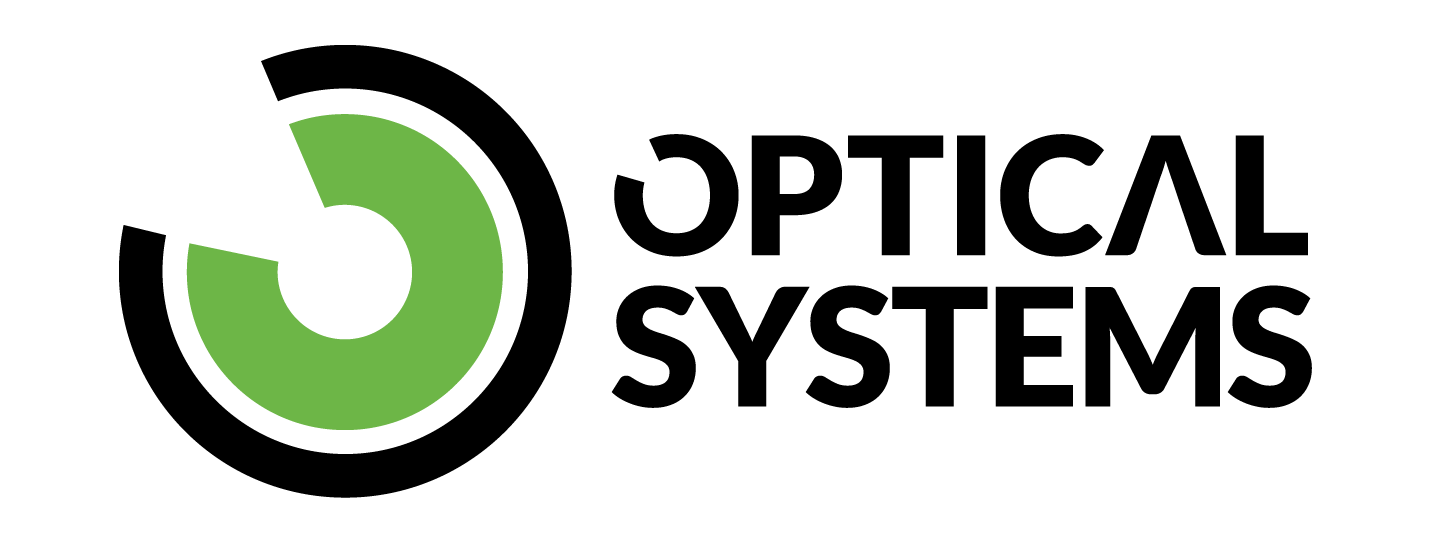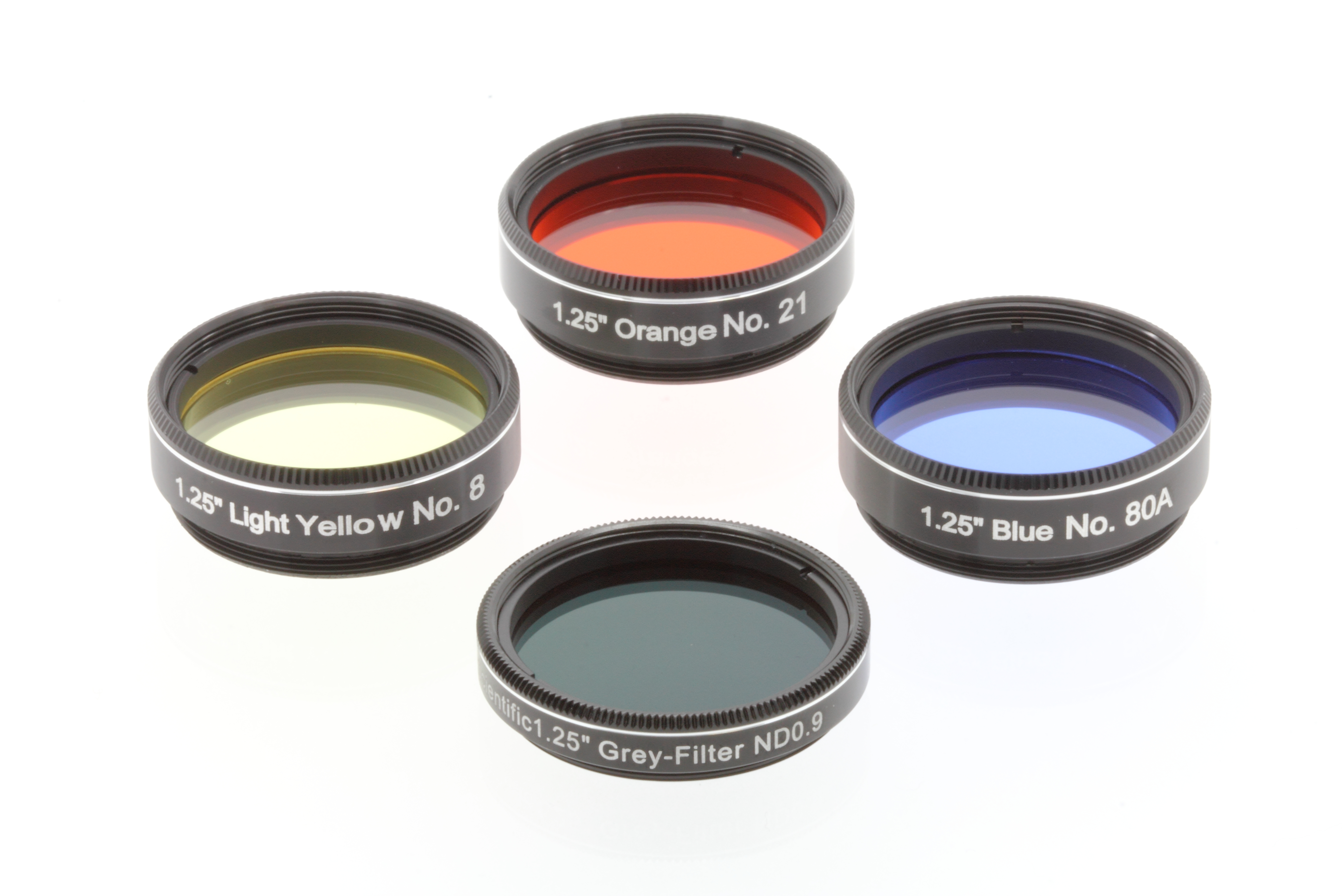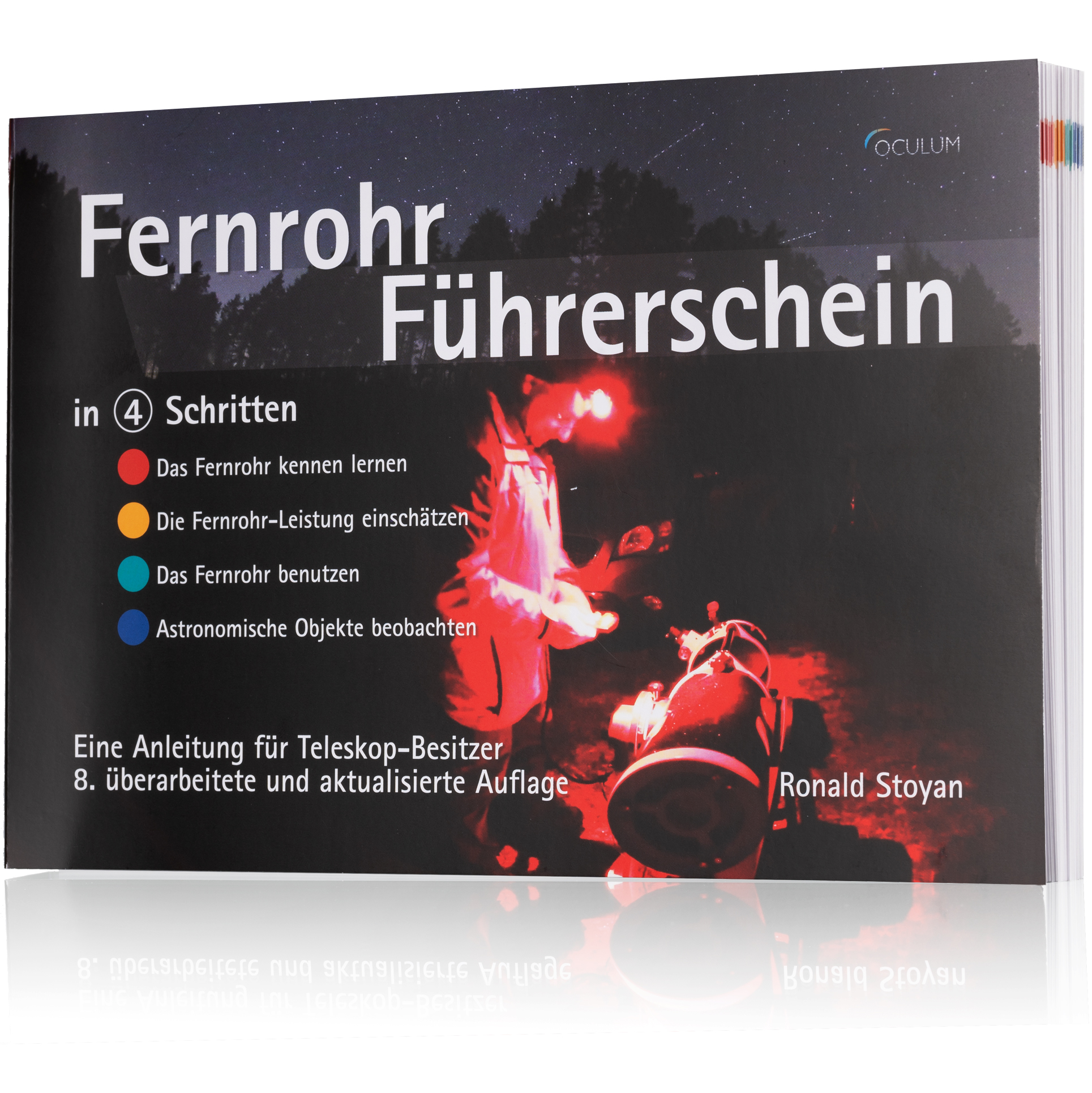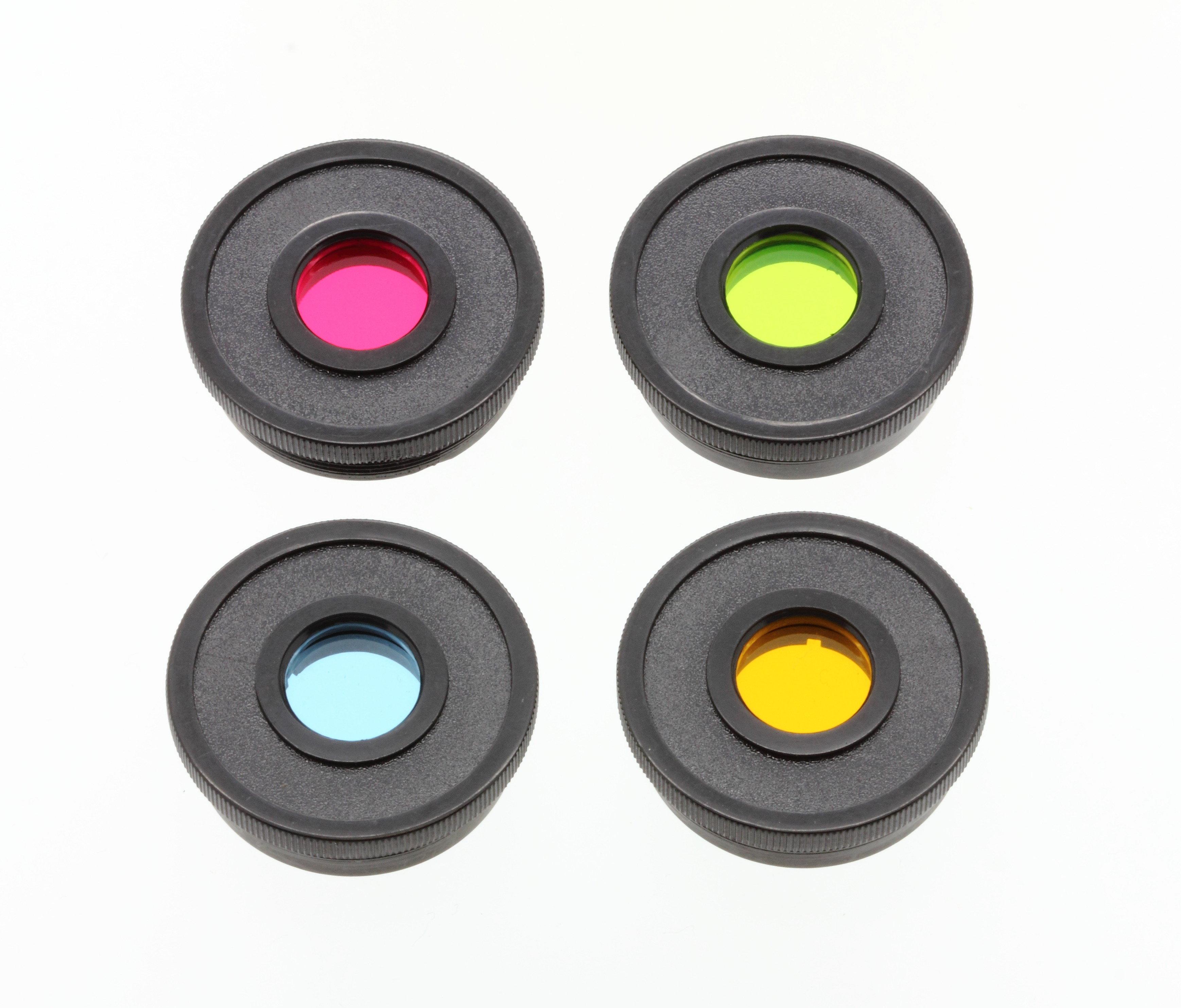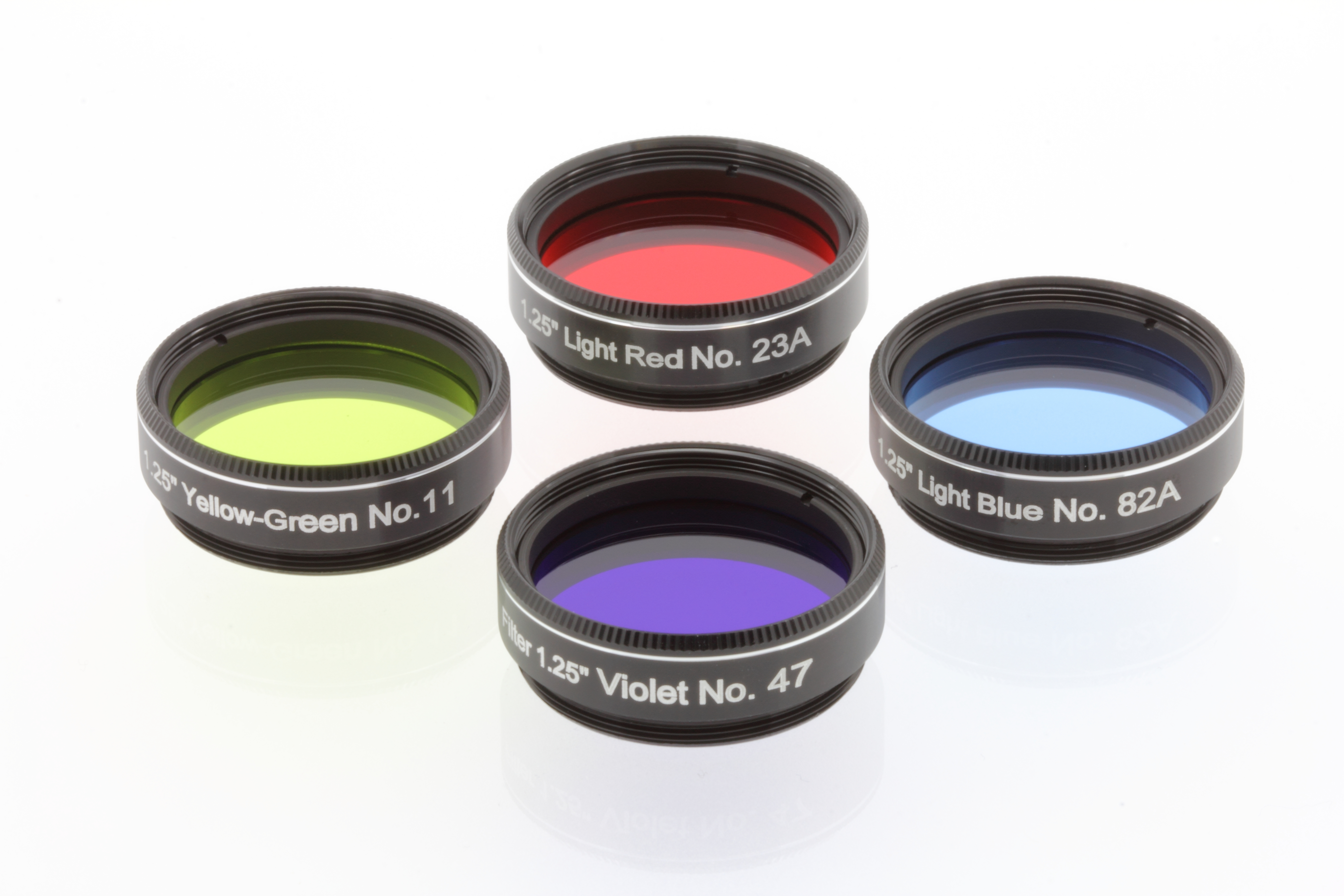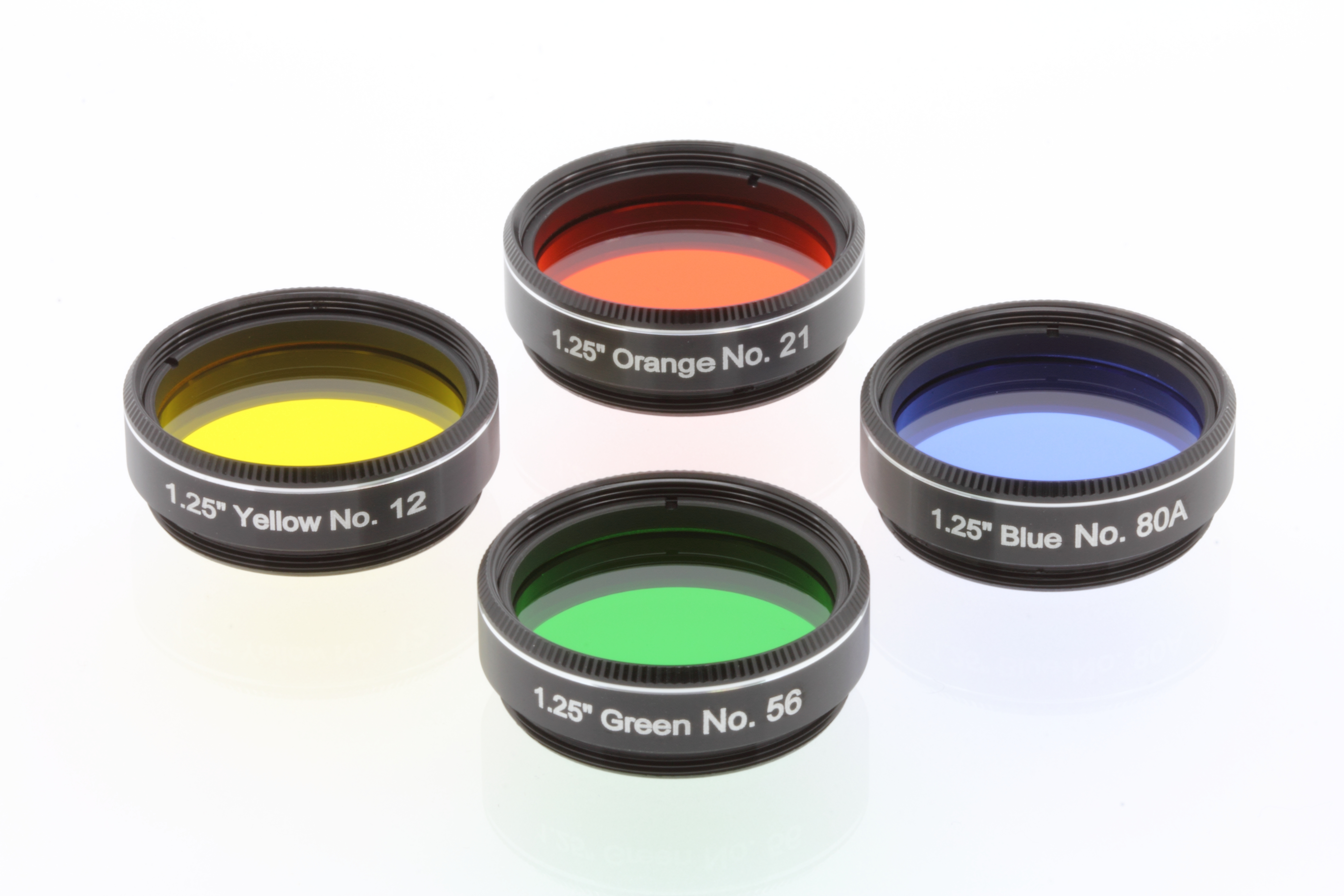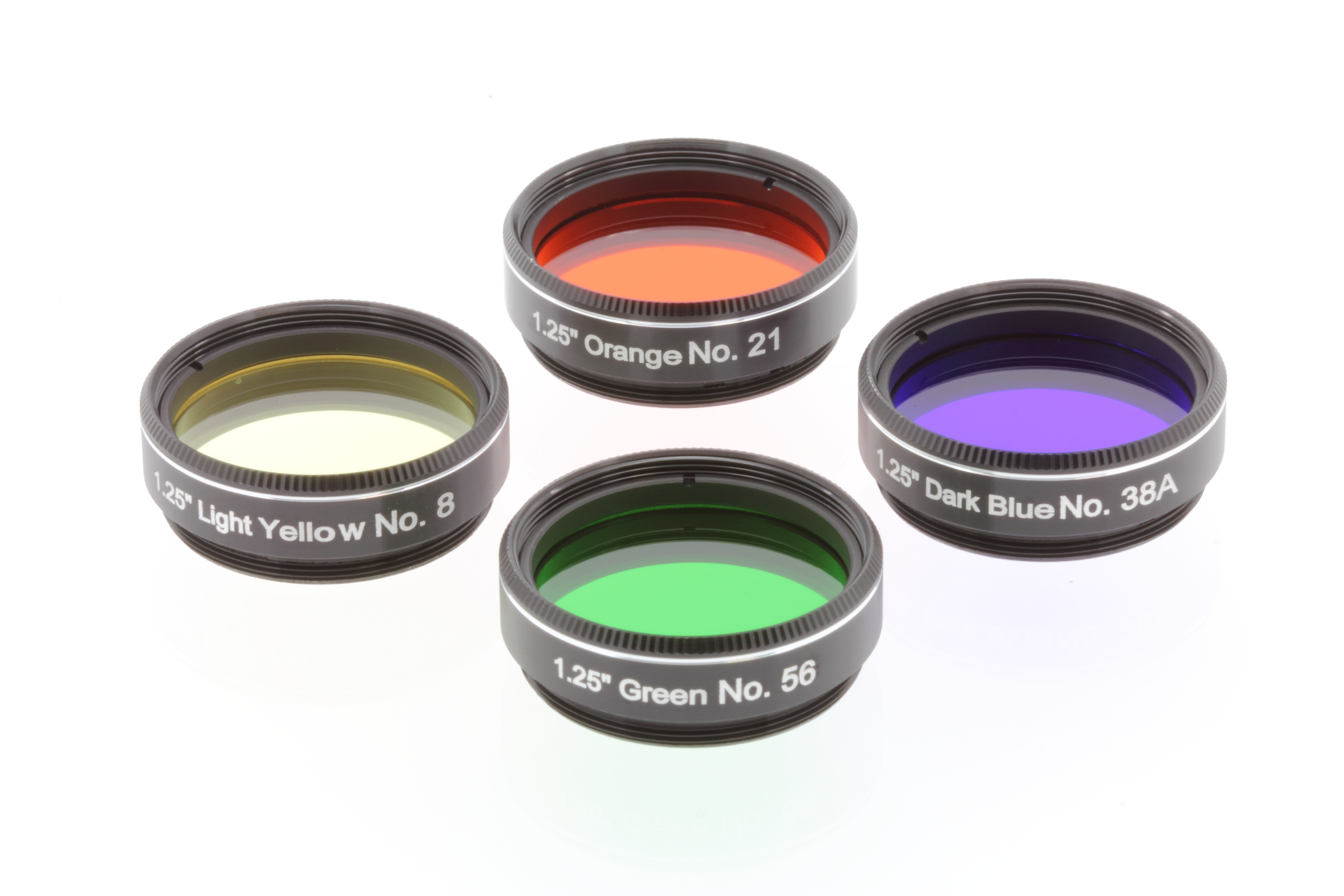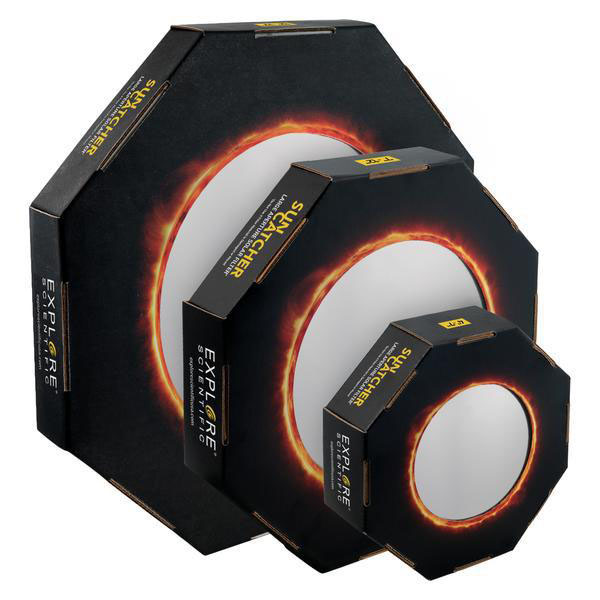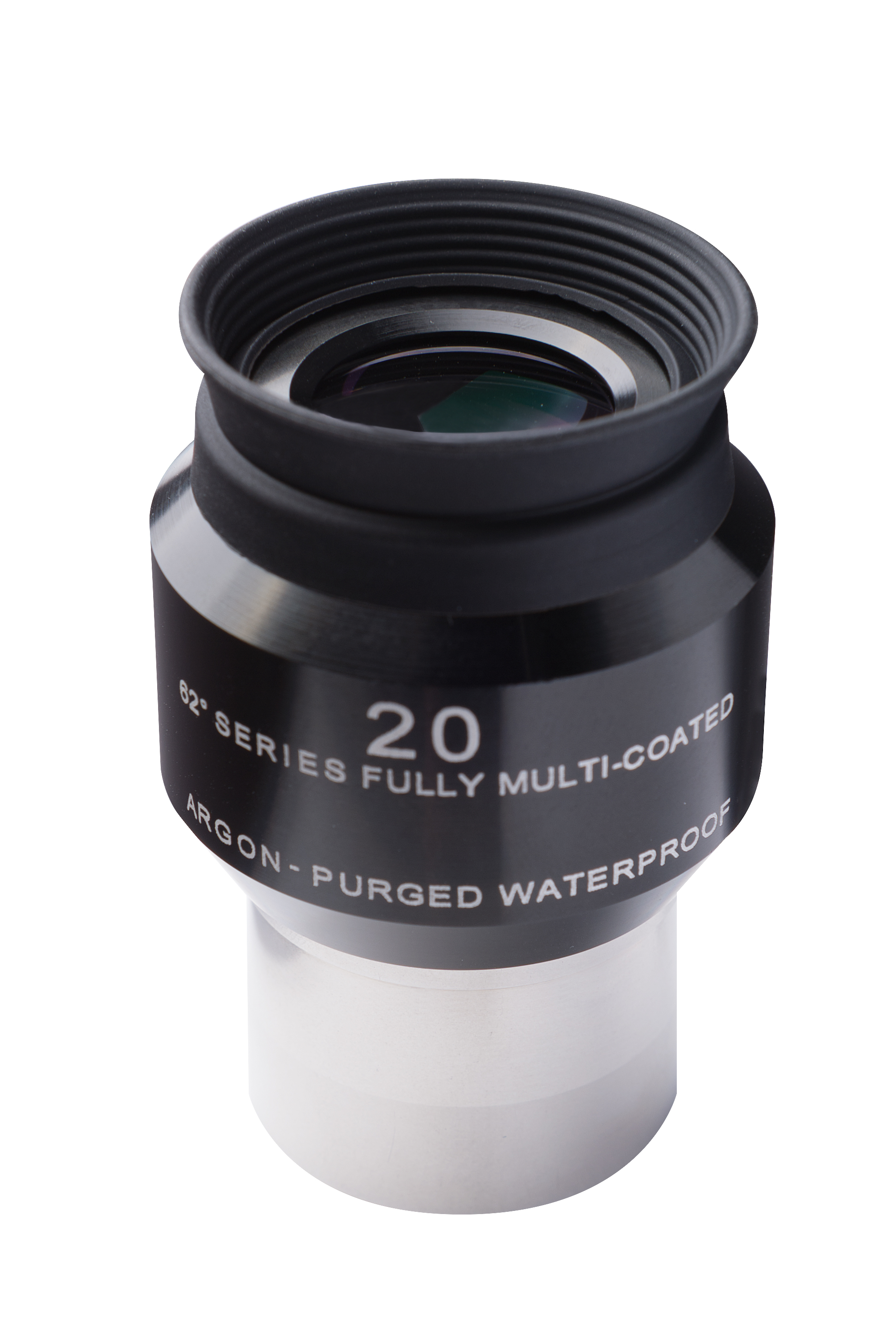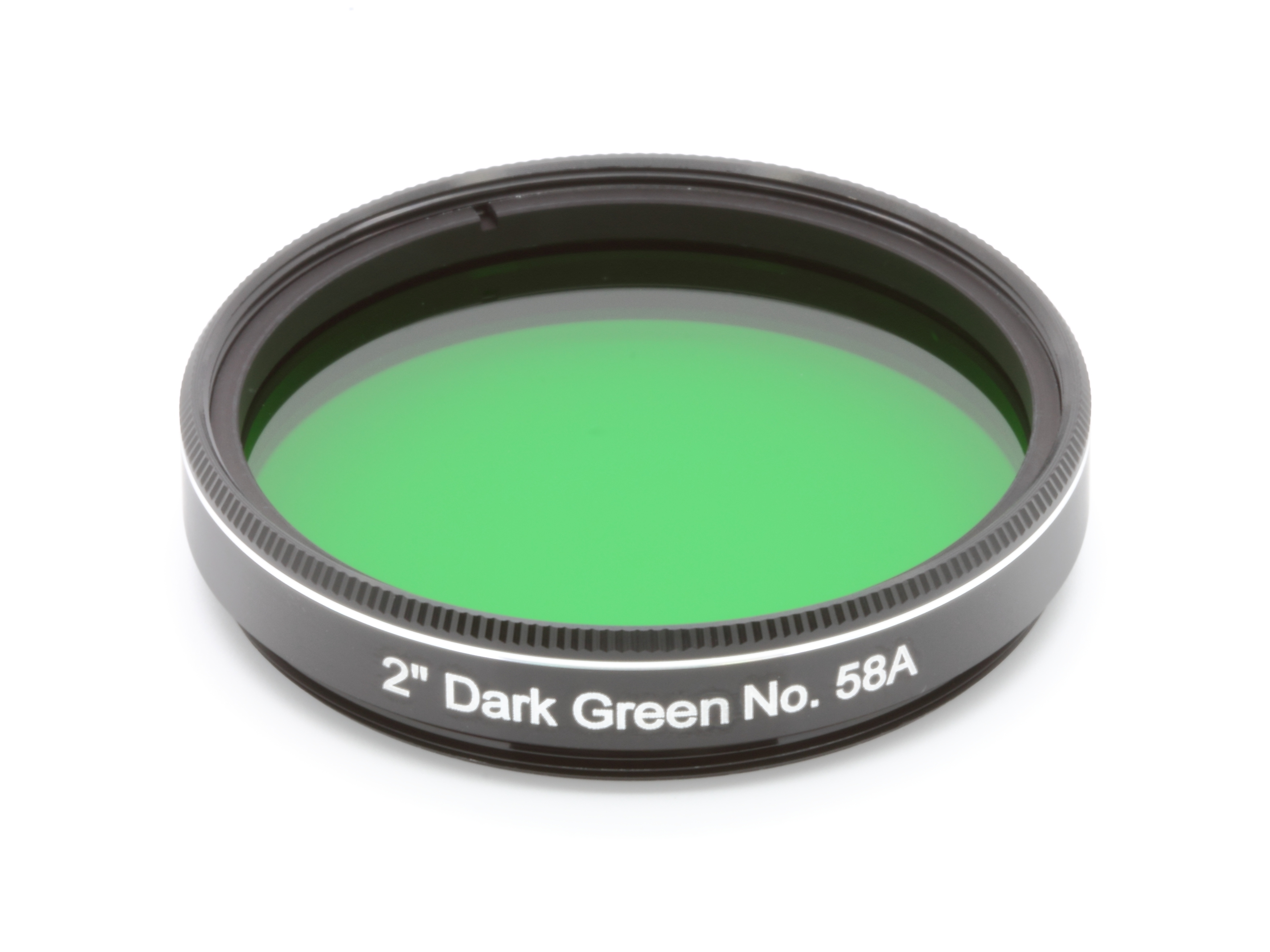Filter Set 1 Moon & Planets from 50mm (2")
- Filter Set 1 Moon & Planets from 50mm (2'')
- Made from high-quality optical glass
- Filter glass is absolutely parallel
- All optical surfaces have anti reflex coatings
- Filter housing from black anodized aluminum
- Filter threads on both ends (female/male)
- Multiple filter usage is possible
Product number:
0310291
GTIN/EAN:
4007922051611
WEEE-Reg.-Nr.:
DE 34716369
Product information "EXPLORE SCIENTIFIC Filter Set 1 Moon & Planets from 50mm (2'')"
Filter Set 1 is recommended for Moon & Planets from 50mm (2'') Aperture
Set 1 includes the following filters:
Explore Scientific Filter 1.25" Light Yellow No.8 - 0310268
Watching the Moon surface through the filter, the contrasts will enormously increase. Same with planet Mars. On the huge planet Jupiter, when using the filter, you can even see the contrasts between the cloud-bands and a lot more details. Starting with a telescope diameter of 8“ and a clear sight, you even get to see various details of Saturn.
Explore Scientific Filter 1.25" Orange No.21 - 0310273
This one really supports the detection of the dark areas on the planet Mars. The details of the clouds of Saturn and Jupiter are also so much more visible through the Filter.
Explore Scientific Filter 1.25" Blue No.80A - 0310264
The color of light blue really supports watching the high clouds on Mars. The contrast increases. The dark red structures will be shown even darker, so this is the perfect filter for watching the big red Flecks on the gas planet Jupiter. The rings of Saturn will be accentuated, the structures of the Venus Atmosphere will be even finer.
EXPLORE SCIENTIFIC 1.25" Filter Grey ND0.9 - 0310245
The neutral density filter transmits light uniformly across the entire visual spectrum. It serves as an excellent filter to reduce glare and irradiation when observing the Moon with any telescope 4"(10.2cm) and larger. The ND96 filter may also be employed in the splitting of close double stars where one of the binary pair significantly exceeds the other in brightness.
What ist a color Filter for and do we really need it?
Color Filters darken the light slightly, that reaches the eye or the sensor of the camera. This eliminates for instance stronger transitions. The result is that your picture turns out with more contrast which automatically shows more details.
FEATURES
Set 1 includes the following filters:
Explore Scientific Filter 1.25" Light Yellow No.8 - 0310268
Watching the Moon surface through the filter, the contrasts will enormously increase. Same with planet Mars. On the huge planet Jupiter, when using the filter, you can even see the contrasts between the cloud-bands and a lot more details. Starting with a telescope diameter of 8“ and a clear sight, you even get to see various details of Saturn.
Explore Scientific Filter 1.25" Orange No.21 - 0310273
This one really supports the detection of the dark areas on the planet Mars. The details of the clouds of Saturn and Jupiter are also so much more visible through the Filter.
Explore Scientific Filter 1.25" Blue No.80A - 0310264
The color of light blue really supports watching the high clouds on Mars. The contrast increases. The dark red structures will be shown even darker, so this is the perfect filter for watching the big red Flecks on the gas planet Jupiter. The rings of Saturn will be accentuated, the structures of the Venus Atmosphere will be even finer.
EXPLORE SCIENTIFIC 1.25" Filter Grey ND0.9 - 0310245
The neutral density filter transmits light uniformly across the entire visual spectrum. It serves as an excellent filter to reduce glare and irradiation when observing the Moon with any telescope 4"(10.2cm) and larger. The ND96 filter may also be employed in the splitting of close double stars where one of the binary pair significantly exceeds the other in brightness.
What ist a color Filter for and do we really need it?
Color Filters darken the light slightly, that reaches the eye or the sensor of the camera. This eliminates for instance stronger transitions. The result is that your picture turns out with more contrast which automatically shows more details.
FEATURES
- Made from high-quality optical glass
- Filter glass is absolutely parallel
- All optical surfaces have anti reflex coatings
- Filter housing from black anodized aluminum
- Filter threads on both ends (female/male)
- Multiple filters usage is possible
- 4pcs color filter
- 4pcs protection-case
| Colour: | black |
|---|---|
| Field of application [Telescope-filter]: | Filter Sets for Moon and Planets |
| Material: | Aluminium |
| Telescope filter type: | Color Filter |
